Nov. 8 to Nov.14
A 10-year-old Chuang Ling (莊靈) recalls sleeping on top of one of the 772 large crates on the Chung Ting (中鼎號) warship as it made its way across the Taiwan Strait in December 1948.
About 320 of these boxes contained artifacts from the National Palace Museum in Nanjing. On the verge of losing the Chinese Civil War, the Chinese Nationalist Party (KMT) were trying to transport as many valuables as they could to Taiwan as part of their massive retreat. Two more shipments of national treasures would reach Keelung harbor in early 1949, making a total of 2,249 crates. The KMT were only able to retrieve about 20 percent of the museum’s collection, but these were carefully selected and the most valuable.
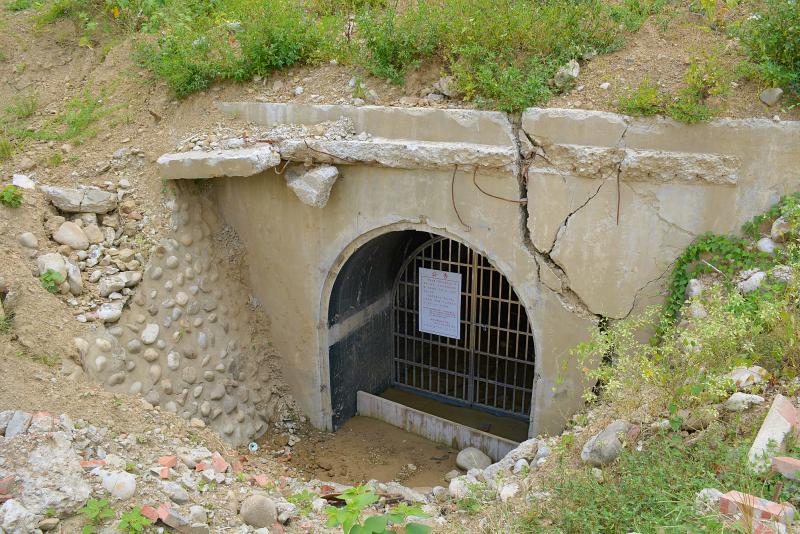
Photo: Yu Po-lin, Taipei Times
Chuang Ling’s father Chuang Yan (莊嚴) began working for the museum in 1925, and was in charge of the collection’s many moves over the decades to keep it out of enemy hands as war ravaged China. His family followed him wherever he went.
As the National Palace Museum did not reopen in Taipei until 1965, one can’t help but wonder what happened to these valuable artifacts during their first 16 years in Taiwan. It turns out that they were stored in a warehouse and cave near Beigou village (北溝) in Taichung’s Wufeng District (霧峰).
In 1956, a temporary display hall in Beigou was established, but it was too remote and small to draw visitors. Five years later, construction began on the current museum in Taipei, which opened its doors on Nov. 12, 1965.
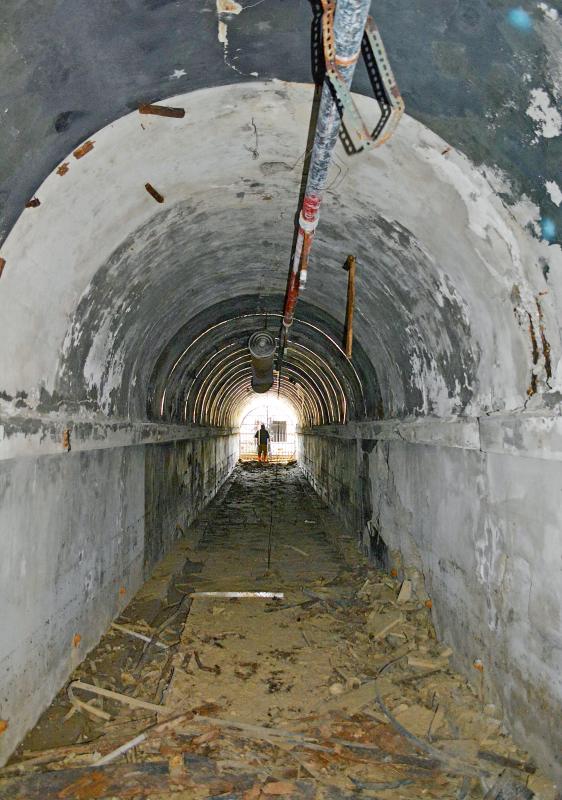
Photo: Yu Po-lin, Taipei Times
FLEEING CHINA
On Oct. 23, 1924, the last Qing emperor Puyi was expelled from the Forbidden City. The next year, the National Palace Museum was established on its grounds, and a fresh out of college Chuang Yan was among many researchers who began working there.
Chuang oversaw the museum collection’s first move in 1933 from Beijing to Shanghai to keep them from falling into the hands of Japanese invaders. They were later moved to Nanjing, and then further west to Guizhou and Sichuan provinces as the conflict intensified. The treasures were shipped back to Nanjing after the Japanese surrendered, but then the Chinese Civil War broke out, leading to the decision to move them to Taiwan.
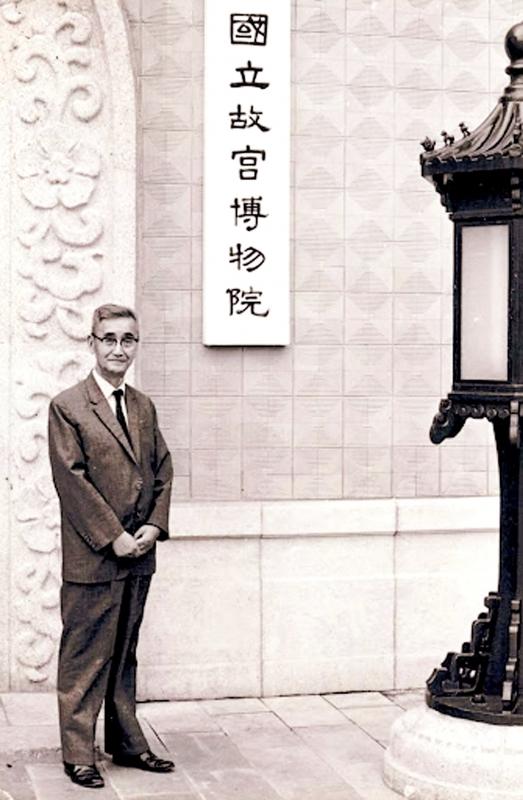
Photo courtesy of Wikimedia Commons
These moves do not include shipping them to other countries such as the UK for display.
“I’ve been moving [these items] for half of my life,” he wrote in his essay series, Stories from the Mountain Hall (山堂清話). “I don’t dare call myself a ‘moving expert,’ but I think I’m close. It’s hard to think that this is not a predetermined fate from my past life.”
The decision to move the artifacts to Taiwan was made on Nov. 10, 1948, four days after the Chinese Communist Party launched a major offensive against the KMT’s Xuzhou Command Headquarters. Selected books from the National Central Library and antiques belonging to Academia Sinica would also be moved.
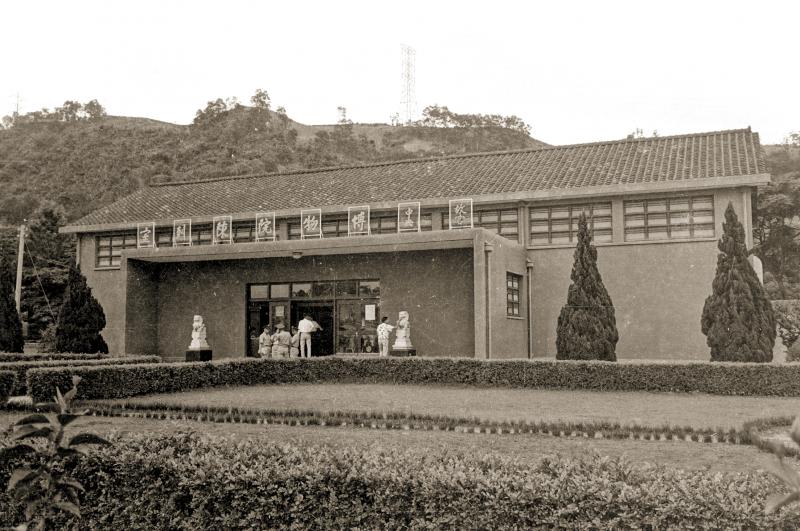
Photo courtesy of Wikimedia Commons
The first shipment was brought to a storage room next to Yangmei train station in today’s Taoyuan City. The officials later moved them to a disused Taisugar warehouse in Taichung due to the area’s drier climate.
This warehouse was later deemed too close to the city and other institutions that would be targeted during an air strike. Museum officials finally settled on a piece of land at the foothills near Beigou Village, and again Chuang moved his family to the area. The national treasures arrived in April 1950.
FINAL HOME
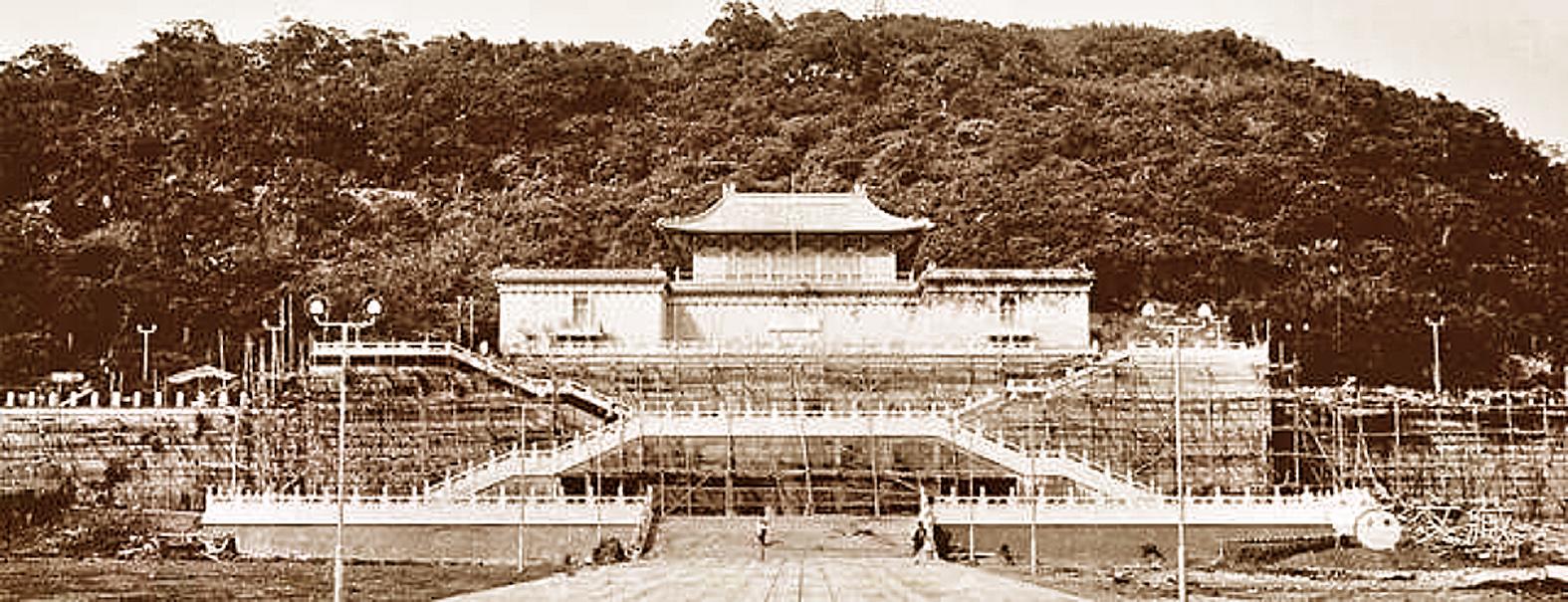
Photo courtesy of Wikimedia Commons
In 1952, work began on a 100m deep, 2.5m wide cave to further protect the artifacts in case of emergency. A few items were placed there, but ultimately it wasn’t suited for long-term storage. However, it was used several times, for example during the Second Taiwan Strait Crisis of 1958.
One of the first tasks was cataloguing the treasures, a process that took four years to complete. Both domestic and international requests to exhibit the items were growing, and at first the staff laid out the items on wooden boards covered with white cloth, and placed them in the aisles of the storage rooms. It was inconvenient and disappointing for visitors, and embarrassing for museum staff. In December 1956, a display room next to the warehouse was built.
This room could house about 200 artifacts, and the items were rotated every few months. It opened its doors in April 1957, drawing about 20,000 visitors in the first month. But due to the remoteness of the location, attendance gradually tapered off.
The highlight of this period was probably 1961, when 253 items were first displayed in Taipei to great fanfare, then shipped to the US for a special exhibition at the National Gallery of Art in Washington DC. They were then brought on a 10-month-long tour to other major cities, drawing a total of about 700,000 visitors, according to Taiwan Today. It was a massive hit among the public, with Life magazine devoting 17 pages to it.
Meanwhile, plans to move the artifacts to a proper museum were under way. Officials were initially divided on where to build it: Taipei was the obvious choice, but detractors thought the capital was too humid and unstable. Ultimately, Waishuangxi (外雙溪) was chosen not just for its scenery, but it was also the closest spot to Taipei where a tunnel could be built for emergency purposes.
Construction began in September 1961, and in October 1965, the national treasures embarked on yet another journey. As usual, Chuang — who was the museum’s deputy director by then — moved with the items.
“It’s been six years since the new museum building in Waishuangxi was completed,” Chuang wrote in 1971. “All the precious artifacts are displayed neatly or stored properly. The days of fleeing and storing them in caves and temples are long in the past. How many still remember that 40 years ago, there was a group of people hurriedly packing up each item in a dusty palace chamber?”
Taiwan in Time, a column about Taiwan’s history that is published every Sunday, spotlights important or interesting events around the nation that either have anniversaries this week or are tied to current events.
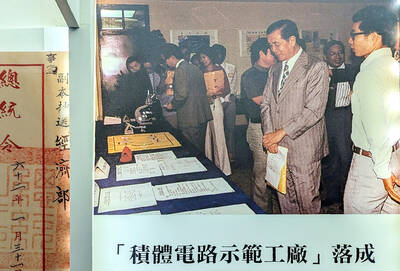
Oct. 27 to Nov. 2 Over a breakfast of soymilk and fried dough costing less than NT$400, seven officials and engineers agreed on a NT$400 million plan — unaware that it would mark the beginning of Taiwan’s semiconductor empire. It was a cold February morning in 1974. Gathered at the unassuming shop were Economics minister Sun Yun-hsuan (孫運璿), director-general of Transportation and Communications Kao Yu-shu (高玉樹), Industrial Technology Research Institute (ITRI) president Wang Chao-chen (王兆振), Telecommunications Laboratories director Kang Pao-huang (康寶煌), Executive Yuan secretary-general Fei Hua (費驊), director-general of Telecommunications Fang Hsien-chi (方賢齊) and Radio Corporation of America (RCA) Laboratories director Pan
The consensus on the Chinese Nationalist Party (KMT) chair race is that Cheng Li-wun (鄭麗文) ran a populist, ideological back-to-basics campaign and soundly defeated former Taipei mayor Hau Lung-bin (郝龍斌), the candidate backed by the big institutional players. Cheng tapped into a wave of popular enthusiasm within the KMT, while the institutional players’ get-out-the-vote abilities fell flat, suggesting their power has weakened significantly. Yet, a closer look at the race paints a more complicated picture, raising questions about some analysts’ conclusions, including my own. TURNOUT Here is a surprising statistic: Turnout was 130,678, or 39.46 percent of the 331,145 eligible party
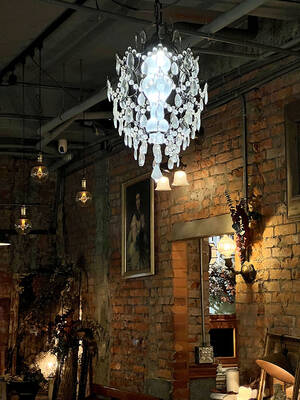
The classic warmth of a good old-fashioned izakaya beckons you in, all cozy nooks and dark wood finishes, as tables order a third round and waiters sling tapas-sized bites and assorted — sometimes unidentifiable — skewered meats. But there’s a romantic hush about this Ximending (西門町) hotspot, with cocktails savored, plating elegant and never rushed and daters and diners lit by candlelight and chandelier. Each chair is mismatched and the assorted tables appear to be the fanciest picks from a nearby flea market. A naked sewing mannequin stands in a dimly lit corner, adorned with antique mirrors and draped foliage

The election of Cheng Li-wun (鄭麗文) as chair of the Chinese Nationalist Party (KMT) marked a triumphant return of pride in the “Chinese” in the party name. Cheng wants Taiwanese to be proud to call themselves Chinese again. The unambiguous winner was a return to the KMT ideology that formed in the early 2000s under then chairman Lien Chan (連戰) and president Ma Ying-jeou (馬英九) put into practice as far as he could, until ultimately thwarted by hundreds of thousands of protestors thronging the streets in what became known as the Sunflower movement in 2014. Cheng is an unambiguous Chinese ethnonationalist,